Edge Tunnel Management
Manage your organization’s Edge Tunnels and set up secure connections for tunneling.
Overview
Edge Tunnels provide secure connections between your organization’s secure network and QueryPie AI Hub. Administrators can manage both organization Edge Tunnels and personal Edge Tunnels, each serving different purposes.
Accessing Edge Tunnel Management Page
Administrator Login
Log in with an administrator account.
Navigate to Menu
Click SECURITY SETTINGS > Edge Tunnel in the left menu.
Verify Page
The Edge Tunnel management page will be displayed.
Organization Edge Tunnel Management
Organization Edge Tunnel Overview
Organization Edge Tunnels are tunnels that allow multiple servers to connect as a group using the same authentication key. Only organization administrators can create Edge Tunnel groups.
Creating Organization Edge Tunnel
Select Tab
Select the Organization Tunnels tab.
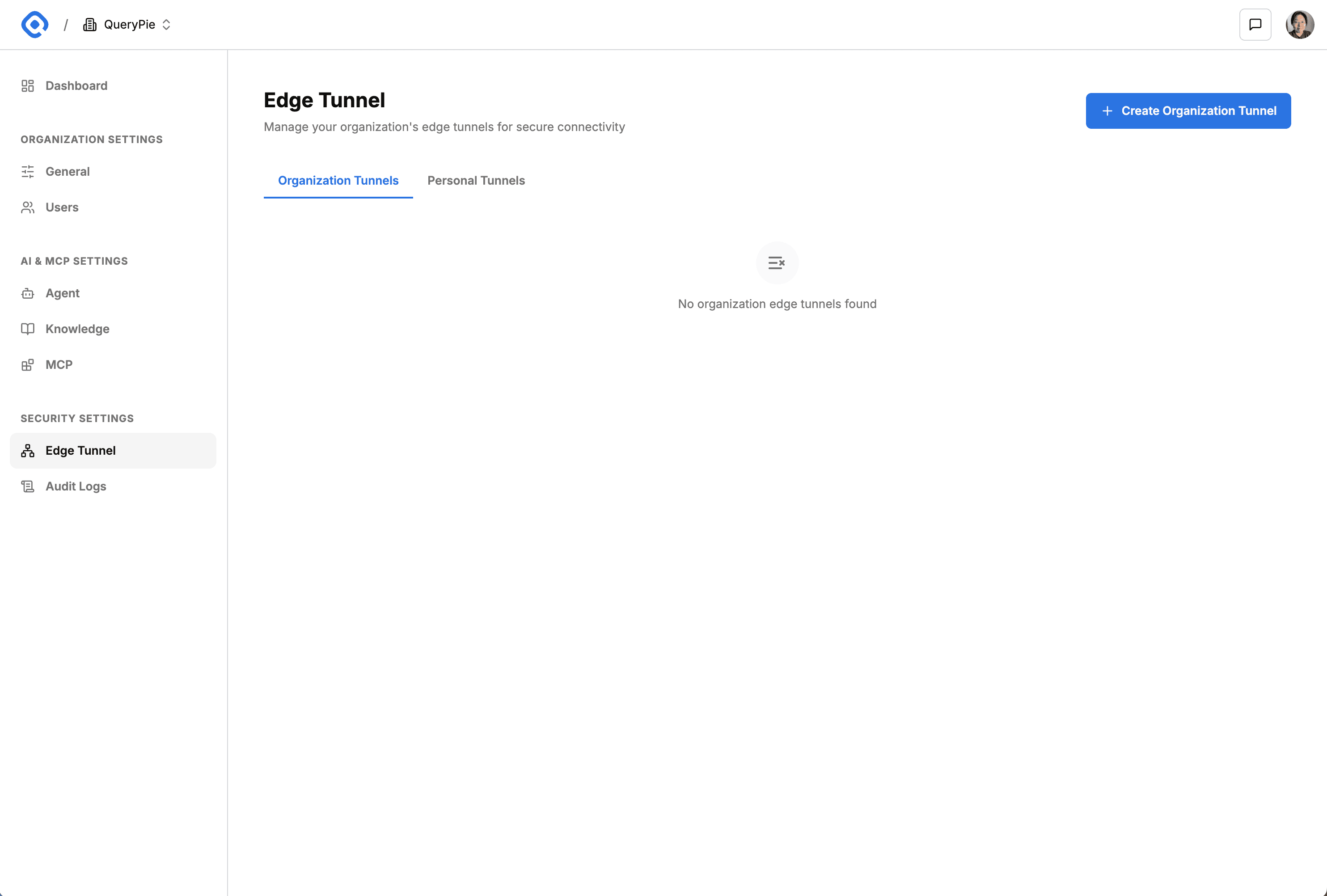
Click Create Button
Click the Create Organization Tunnel button.
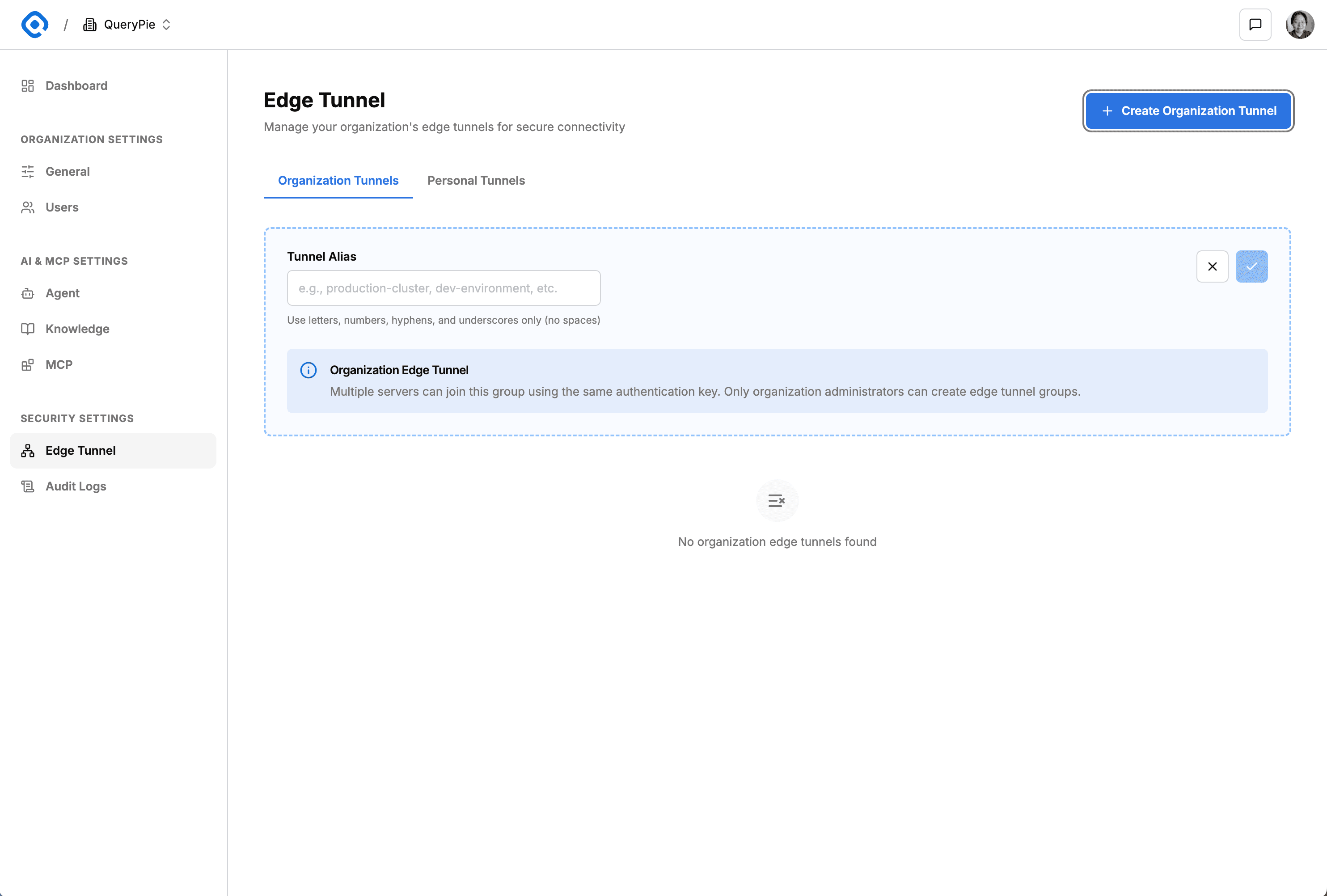
Enter Tunnel Alias
Enter a tunnel group name in the Tunnel Alias field.
- Only alphanumeric characters, hyphens, and underscores are allowed (no spaces)
- Examples:
production-cluster,dev-environment, etc.
Complete Tunnel Creation
Click the check button after entering the information to create the tunnel.
Connecting Organization Edge Tunnel
After creating the tunnel, a command to run on the server will be provided:
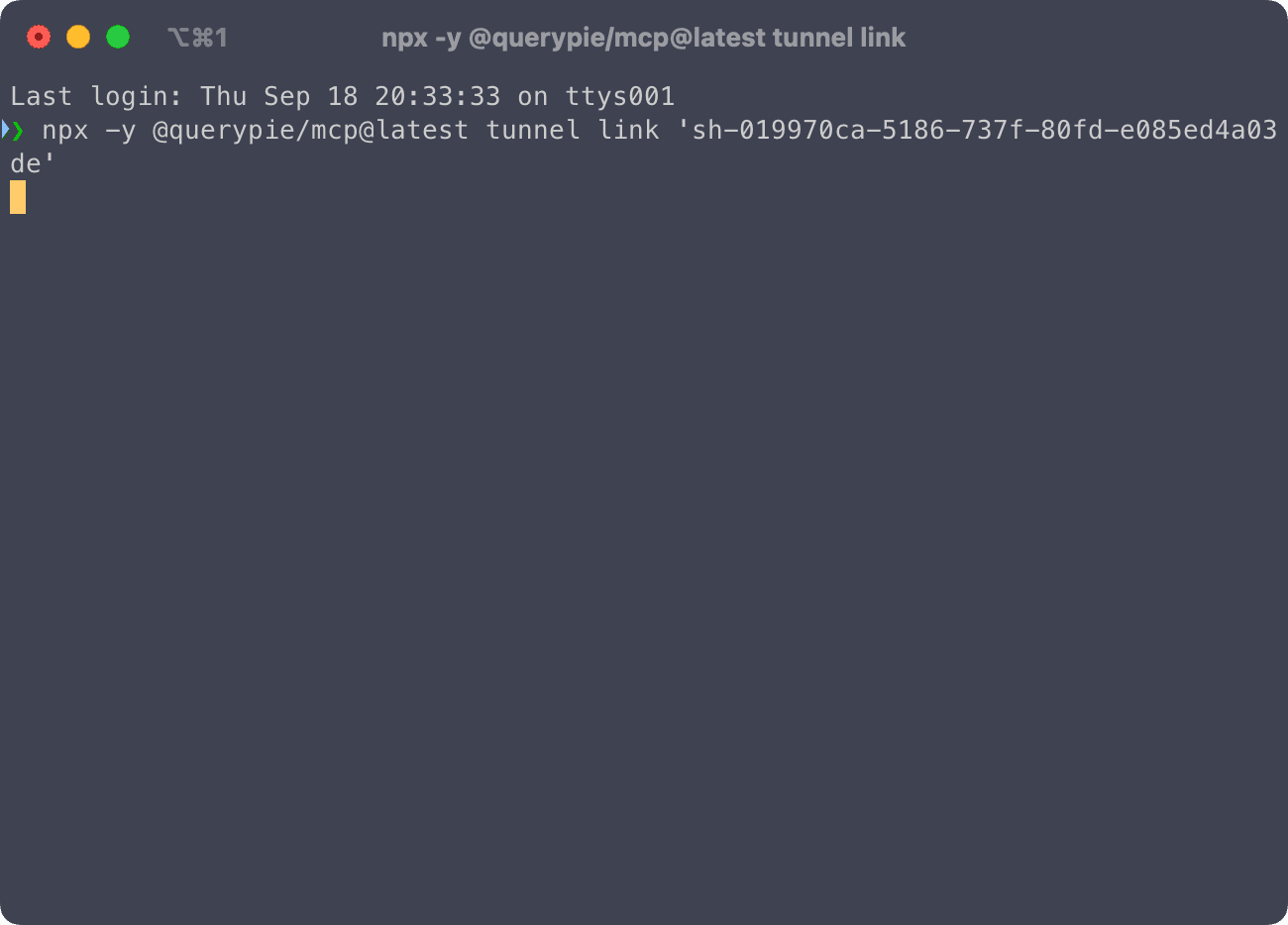
Click Install Button
Click the Install Edge Tunnel button.
Copy Command
Copy the displayed command:
npx -y @querypie/mcp@latest tunnel link '<tunnel-key>'Execute Command on Server
Run the copied command in the terminal of the server you want to connect.
Verify Connection
Once the tunnel is successfully connected, server information will be displayed in the Connected Servers list.
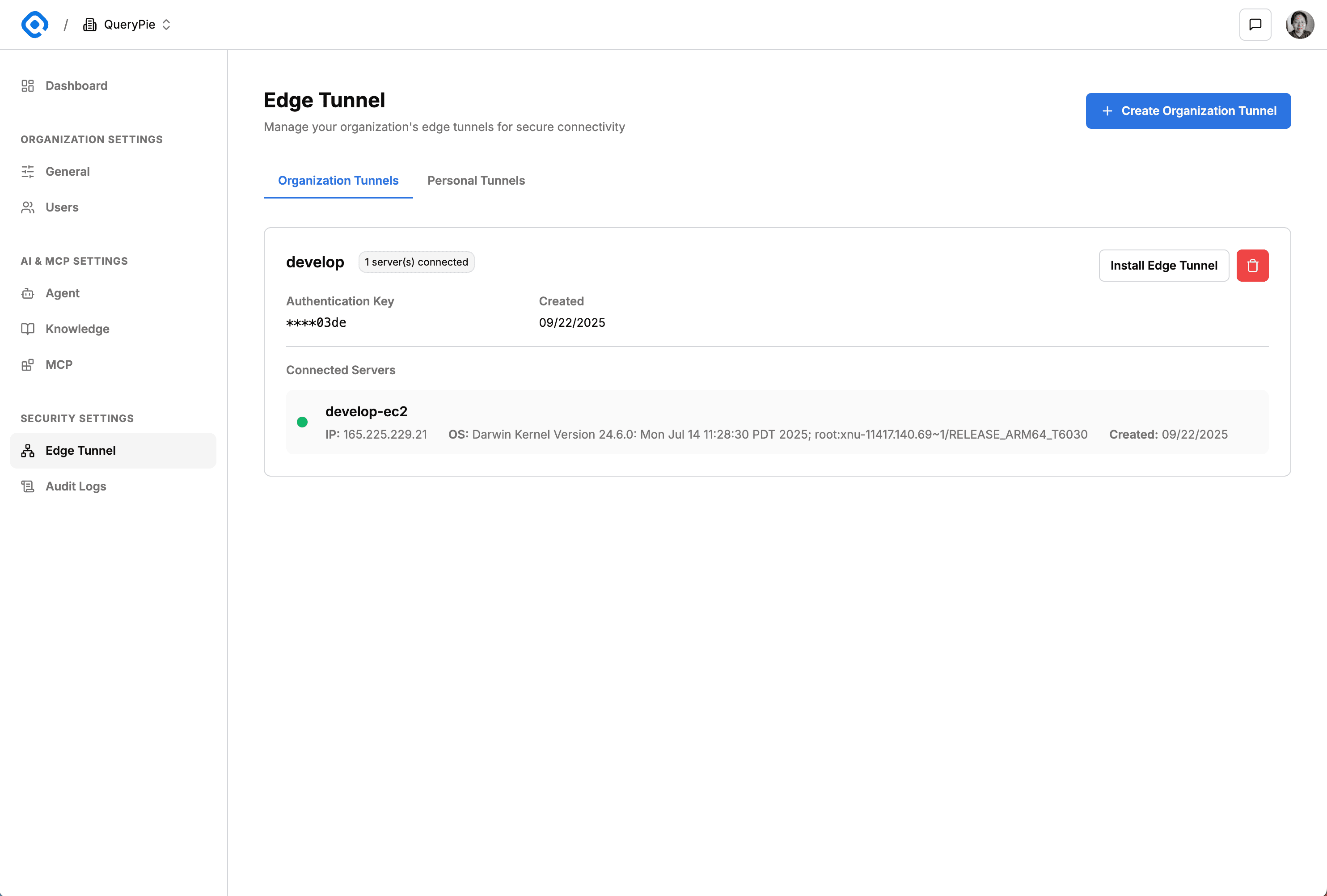
Checking Connected Server Information
For each connected server, you can check the following information:
- Server Name: Identifier of the connected server
- IP Address: Server’s IP address
- OS Information: Operating system and version information
- Created Date: Date when the server was connected to the tunnel
Personal Edge Tunnel Management
Personal Edge Tunnel Overview
Personal Edge Tunnels are tunnels created and managed by individual users. Administrators can monitor and manage all personal Edge Tunnels within the organization.
Checking Personal Edge Tunnel List
Select Tab
Click the Personal Tunnels tab.
Check List
A list of all personal Edge Tunnels within the organization will be displayed.
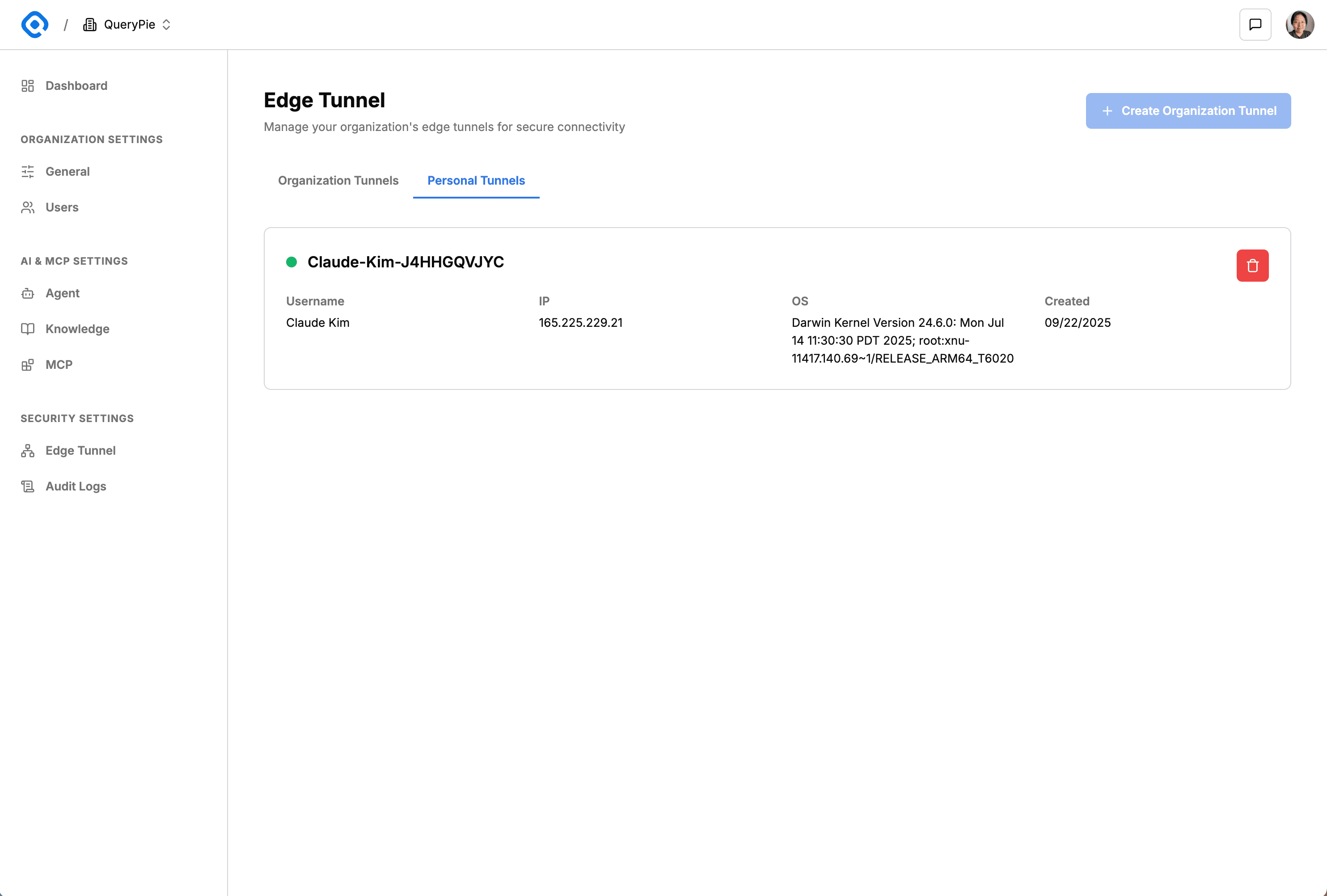
The following information is displayed for each tunnel:
- Tunnel Identifier: Unique tunnel ID
- Username: User who created the tunnel
- IP Address: IP address of the connected client
- OS Information: Client’s operating system information
- Created Date: Date when the tunnel was created
Force Terminating Personal Edge Tunnel
You can force terminate personal Edge Tunnels when necessary.
Click Delete Button
Click the delete button (🗑️) on the right side of the tunnel row you want to delete.
Display Confirmation Dialog
A deletion confirmation dialog will be displayed.
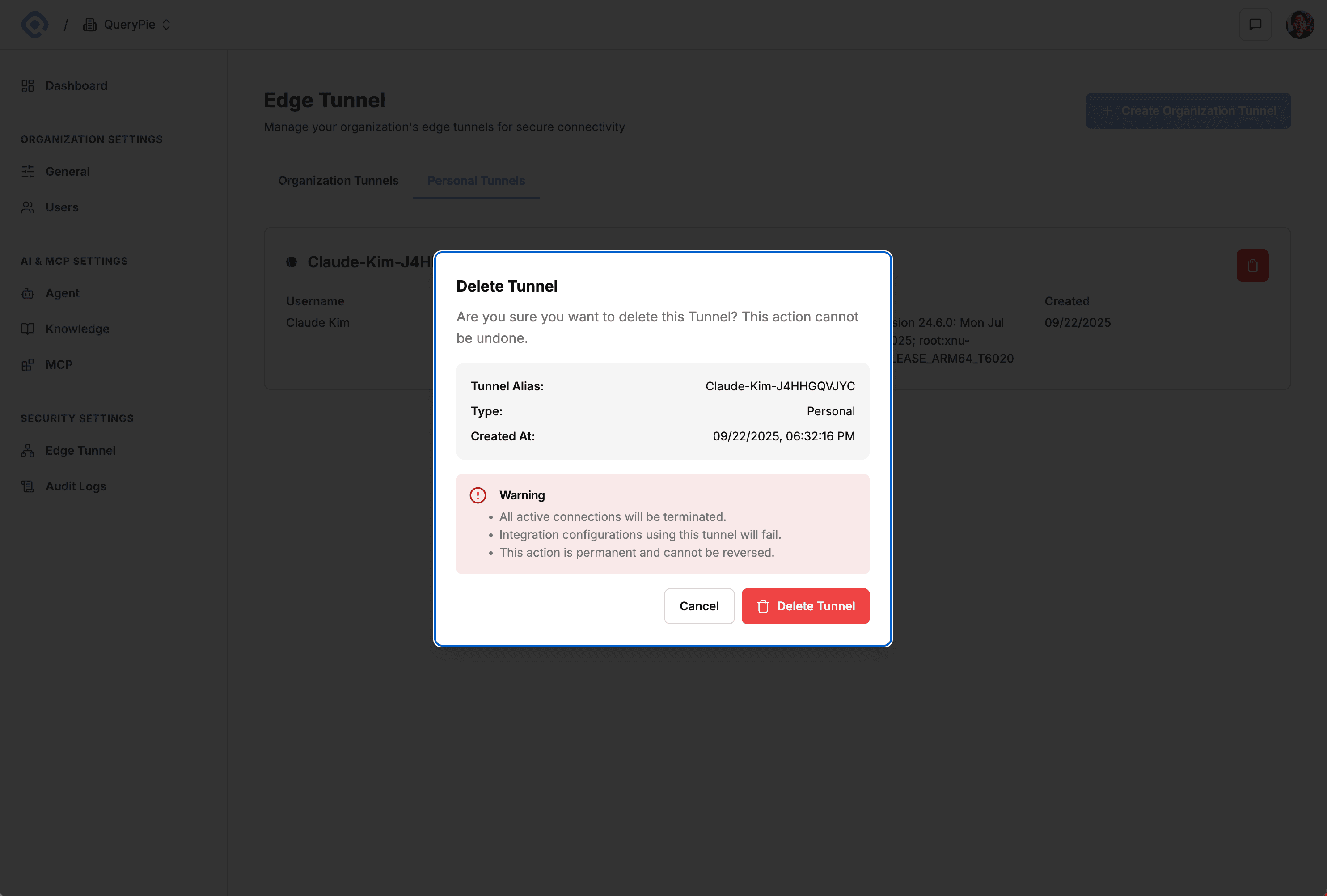
Verify Tunnel Information
Verify the following information:
- Tunnel Alias: Identifier of the tunnel to be deleted
- Type: Tunnel type (Personal)
- Created At: Tunnel creation time
Check Warnings
Check the warnings in the Warning section:
- All active connections will be terminated
- Integration settings using this tunnel may fail
- This action is permanent and cannot be undone
Confirm Deletion
Click the Delete Tunnel button to confirm the deletion.
Edge Tunnel Status Monitoring
Checking Connection Status
- Green dot: Tunnel is active and normally connected
- Number of connected servers: Shows the number of servers connected to each organization tunnel
Tunnel Management Best Practices
- Naming Convention: Write tunnel aliases to clearly indicate their purpose
- Regular Inspection: Regularly clean up unnecessary personal tunnels
- Security Management: Keep tunnel authentication keys secure
- Monitoring: Regularly check the status of connected servers
Precautions
- Only organization administrators can create organization Edge Tunnels
- All connections will be immediately terminated when deleting tunnels
- Deleted tunnels cannot be recovered, so decide carefully
- Tunnel connection status is updated in real-time